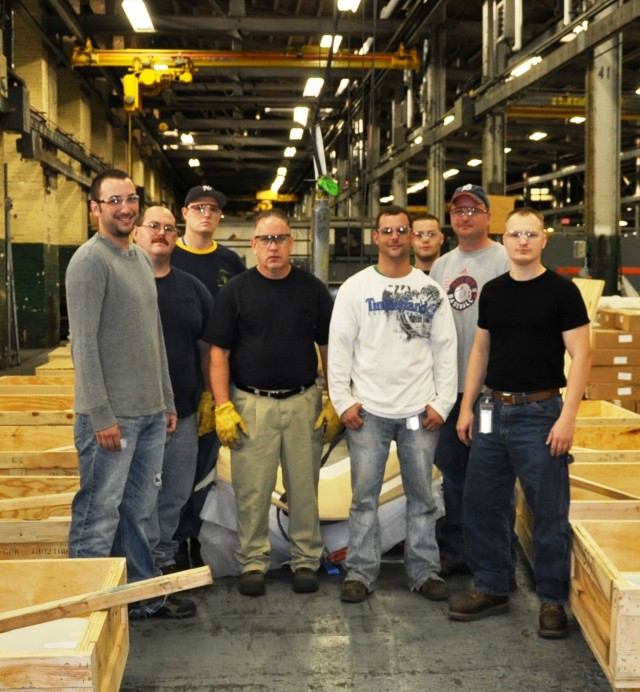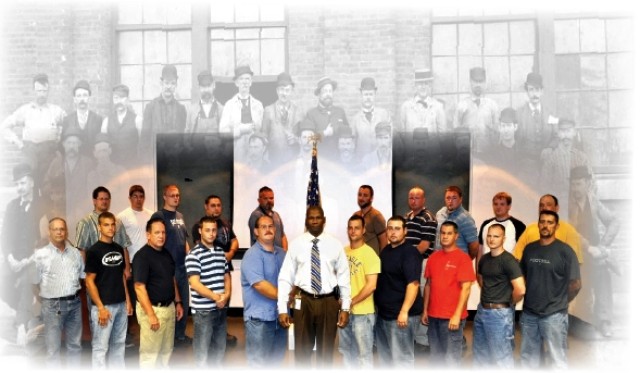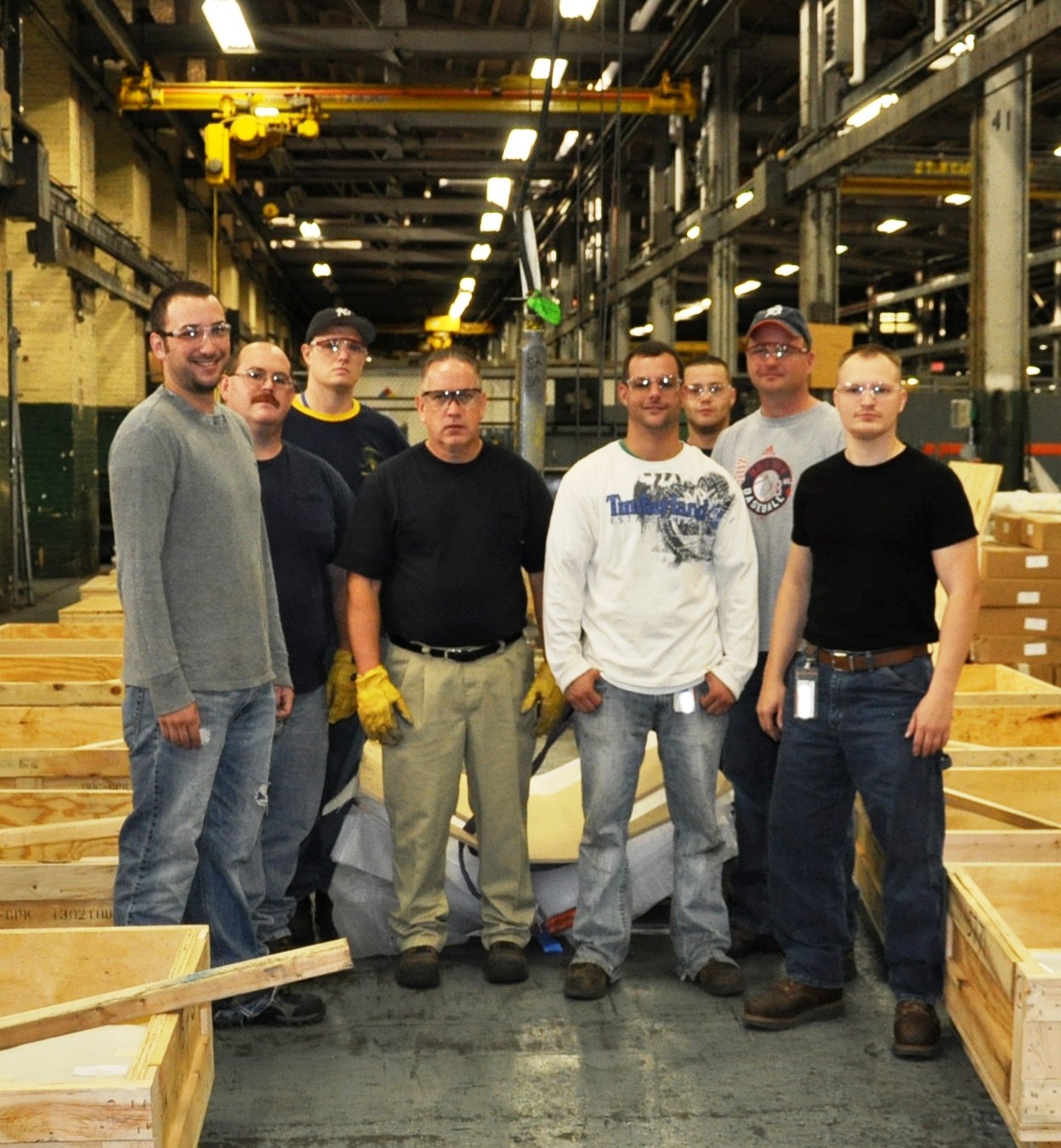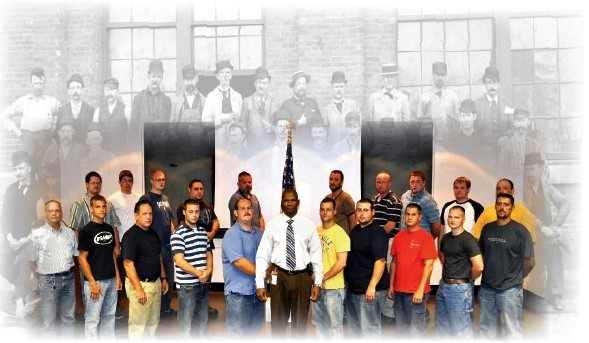Given that the Arsenal is nearly 200 years old, there are bound to be a few ghosts and skeletons in the closet among the buildings that some date to 1828. In addition to ghosts and skeletons are secrets that some say are the key to the Arsenal's long-term survival, but are disappearing more and more every day.
No, this isn't a story that will inspire you to run out to buy candy for Halloween, but maybe it is a call to action to the senior workforce to share their trade secrets with the Arsenal kids that some call "apprentices."
The Arsenal commander recently spoke about his concern for workforce management in regards to an overpowering statistic that more than 50 percent of the Arsenal workforce is eligible to retire in the next five years.
According to Col. Scott N. Fletcher, the Arsenal has a personnel "bubble" due to the nine reductions in force that rippled through the Arsenal workforce from 1991 to 2001.
"When the Arsenal reduced its workforce from more than 2,000 in 1991 to a little over 400 by 2001, only the more experienced workers remained," Fletcher said. "That cohort, who survived the reductions of the 1990s, is expected to retire within the next few years."
Many people may think that finding an experienced machinist should be an easy task given the high unemployment rate in the Capital District, but they would be wrong for several reasons.
First, there are many various types of machinists and therefore, they are not as interchangeable as "plug and play" modules for your computer. The Arsenal machinists are experts on any number of the 200 different types of machines in the production bays.
Today, there are no manufacturing industries in the Northeast that have the number of machines or the degree of difficulty of machining Aca,!aEURc that ranges from forge operations to prototype development Aca,!aEURc as one would find on the Arsenal.
Second, the United States has moved from a manufacturing-based economy to an economy based on information. So, there are significantly fewer certified machinists available in the U.S. This is evident today when one looks at General Motors.
Heavy manufacturing giant GM was in the 1950s the largest corporate employer in the world. Only Soviet government-controlled manufacturers employed more workers, according to wikicars.org.
And in 1979, GM's U.S. employment peaked at 618,365, making it the largest private employer in the country. Today, GM employs less than 40,000 workers in the U.S., according to the Associated Press.
Therefore, the future of manufacturing may lie squarely on the backs of our apprentices.
These men and women apprentices have been the primary feeder program for the Arsenal since 1905 in providing operators for our machines. And, for the most part, they have been local folks who have had family members and friends precede them to the Arsenal.
But that is where the similarities end.
Apprentices in 1905 dealt with chalk boards Aca,!aEURc today's apprentices deal with high-tech smart boards.
Apprentices in 1905 dealt with mud on the streets of Watervliet as they walked to work Aca,!aEURc today's apprentices deal with traffic on I-787, I-87, and I-90.
Apprentices in 1905 dealt with steel that was not much better than flake iron Aca,!aEURc today's apprentices must deal with hardened Titanium and Inconel steel that allow our cannons to fire thousands of rounds during their tube lifetime.
Finally, apprentices in 1905 dealt with competition from manufacturers mainly in the Northeast Aca,!aEURc today's apprentices must deal with global competition.
But interestingly, some of today's apprentices believe their personal success and the long-term viability of the Arsenal depends not so much on the future, but on the past.
Tim Fontaine and Brant Wert, two new apprentices who began their four-year program this month, said that despite the focus on new technology in steel and in machining, they will turn more to the senior Arsenal machinists for their education and training over the next few years.
"We need their secrets," said Wert and echoed by Fontaine.
Wert and Fontaine went on to explain that the senior machinists who will retire in the next few years survived through the nine reductions-in-force for a reason.
"They were the best because they had become masters of little tricks of the trade that aren't in text books," said Fontaine.
Wert added, "It is those 'secrets' that we need to learn in order for us to be ready to take over when they (senior machinists) retire."
Wert said he believes that as long as there is combat there will be a requirement for troops on the ground who will need to be armed and equipped.
Given the global business environment, however, there is no guarantee that arming those future troops on the ground must be an Arsenal mission.
Therefore, the new workforce has thrown out the challenge to those who will retire soon to turn over their secrets. Secrets that are disappearing more every day but are essential to the long-term viability of the Arsenal.




Social Sharing